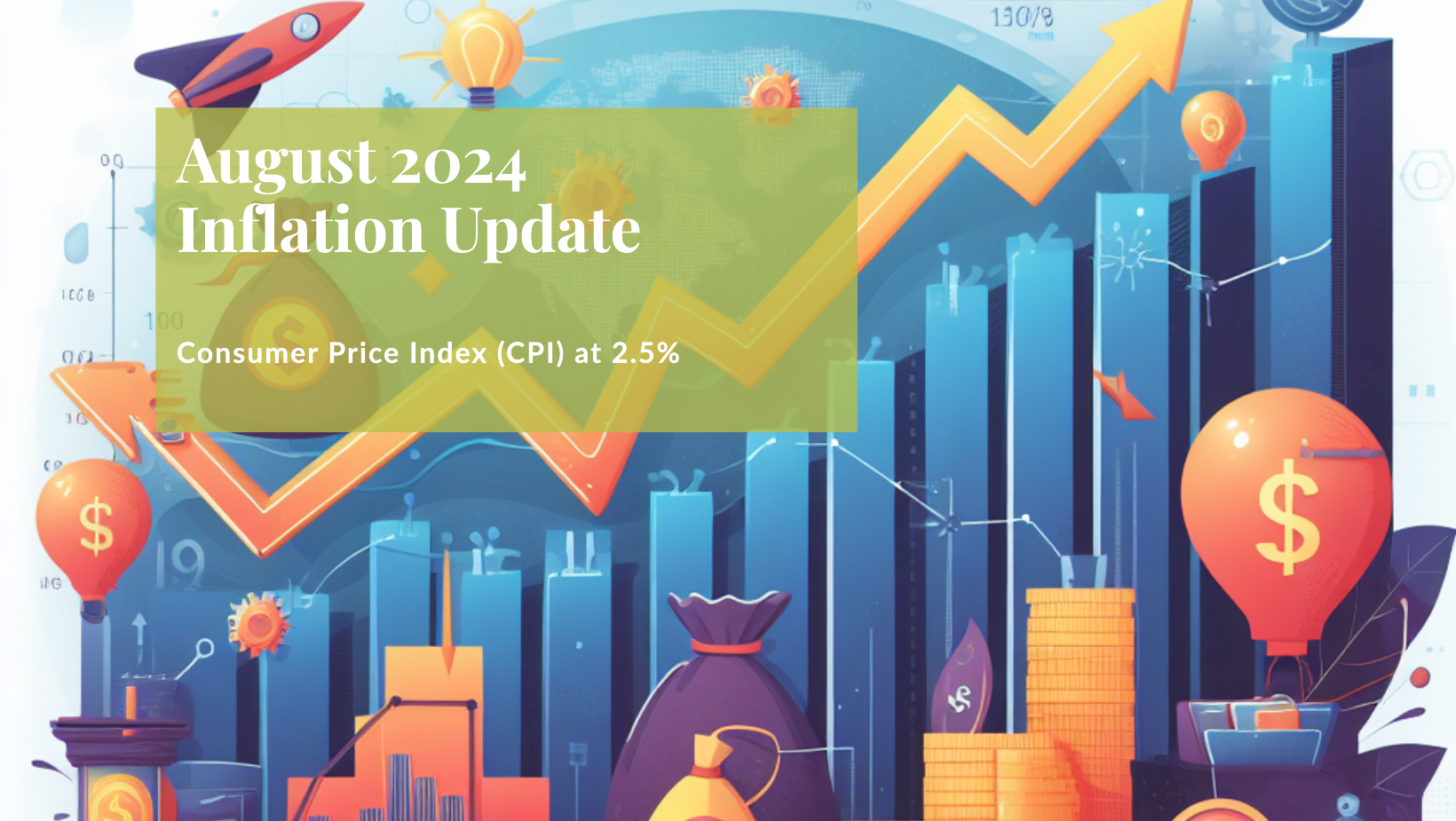August 2024 Inflation Update: Consumer Price Index (CPI) at 2.5%
With the Federal Reserve lowering interest rates by half a percentage in September 2024, it is a good time to review some of the key inflation data points and understand overall trends of inflation and overall change. The CPI is published by the Bureau of Labor Statistics and the Bureau of Economic Analysis. The Federal Reserve also uses this data to determine interest rate changes and policy.
Consumer Price Index (CPI) & Core Inflation Rate
The CPI data is a widely followed measure of inflation that tracks the average change in prices paid by urban consumers for a basket of household consumer goods and services. The CPI has dropped to 2.5%, compared to 3.1% in January 2024. The Core CPI, less food and energy costs, is at 3.2% year over year. Shelter and transportation costs are the cause of the small increase from August numbers.
Knowledge is Confidence!
Producer Price Index (PPI) – Inflation Measure for Manufactures
This vital measurement tracks the average price change domestic producers receive for their goods and services. It is a leading indicator of consumer inflation, reflecting price pressures that may eventually pass on to consumers. In August, the PPI rosed 0.2%, final demand prices were unchanged from July. Goods prices were flat in August, compared to a 0.6% increase in July.
Personal Consumption Expenditures (Core PCE)
The PCE price index, also known as consumer spending, is measured by the Bureau of Economic Analysis and the preferred measurement on inflation by the Federal Reserve Bank. It is another closely watched inflation gauge, excluding volatile food and energy prices. It is considered a preferred measure of inflation by the Federal Reserve as it provides a cleaner signal of underlying inflation trends. As of July, Core PCE is at 2.6%, unchanged from June & May. Down from 2.8% in April.
Oil & Gasoline Prices
Gas prices fell by 4.6 percent in August. The United States average price of all formulations dropped 16.5 cents from $3.598 at the end of July to $3.433 at the end of August. Brent oil prices dropped from $85.15 in July to $80.36 in August.
What does this mean for Price Inflation?
The combined numbers may provide complementary insights into future inflation expectations. While the CPI reflects consumers’ headline inflation experience, the CPE excludes volatile components and offers a clearer picture of underlying inflation trends. Conversely, the PPI indicates price pressures that may eventually translate into higher consumer prices.
Reach Out to Us!
If you have additional federal benefit questions, contact our team of CERTIFIED FINANCIAL PLANNER™ (CFP®), Chartered Federal Employee Benefits Consultants (ChFEBC℠), and AIF® professionals. At PlanWell, we are federal employee financial advisors with a focus on retirement planning. Learn more about our process designed for the career fed.
Preparing for federal retirement? Check out our scheduled federal retirement workshops. Sign up for our no-cost federal retirement webinars. Make sure to plan ahead and reserve your seat for our FERS webinar, held every three weeks. Want to have PlanWell host a federal retirement seminar for your agency? Reach out, and we’ll collaborate with HR to arrange an on-site FERS seminar.
Want to fast-track your federal retirement plan? Skip the FERS webinar and start a one-on-one conversation with a ChFEBC today. You can schedule a one-on-one meeting with us.










